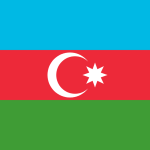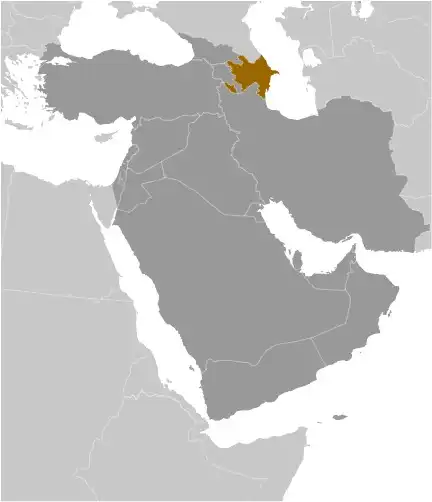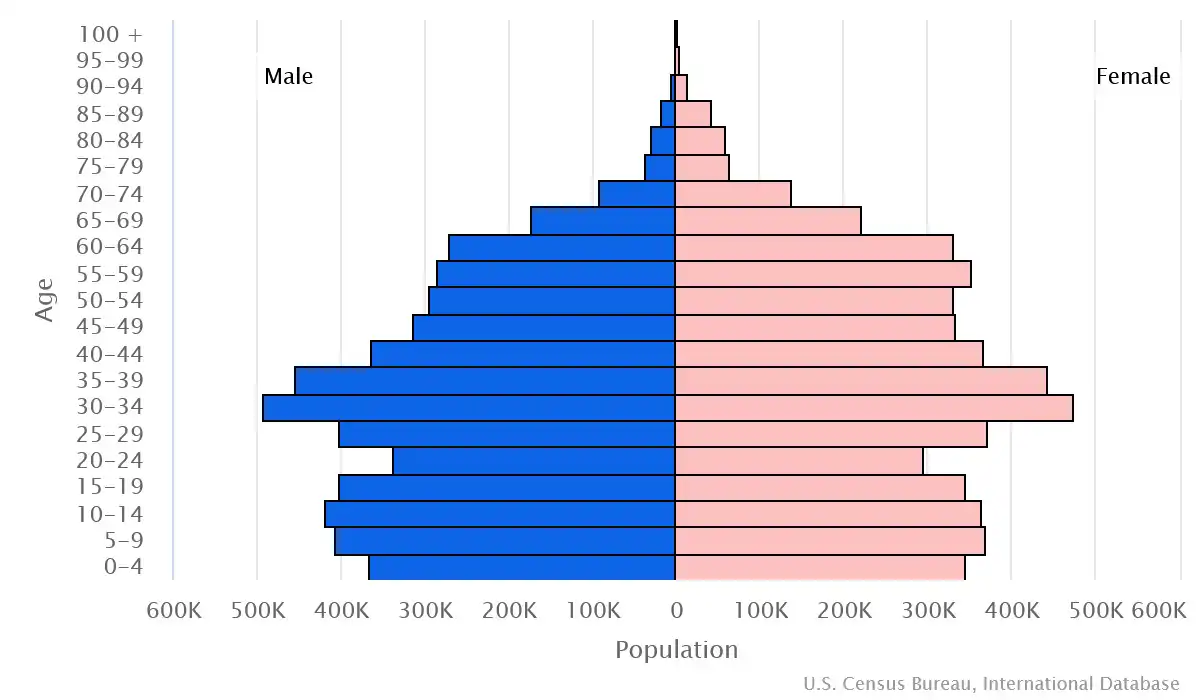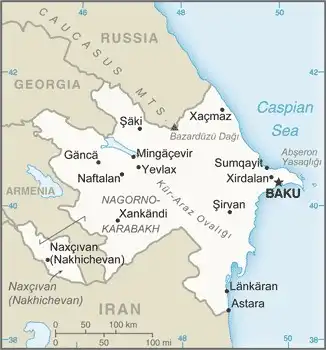
Azerbaijan
Country Data Dashboard

| Government type: | presidential republic |
| Capital: | Baku (Baki, Baky) |
| Languages: | Azerbaijani (Azeri) (official) 92.5%, Russian 1.4%, Armenian 1.4%, other 4.7% (2009 est.) |
People & Society
Ethnicity (2009 est.)
Religion (2020 est.)
Age structure

Economy
Economic overview
upper-middle income, oil-dependent Caucasus economy; minimal economic diversification and dominance of state-owned enterprises; growth and fiscal consolidation supported by oil revenues, but risks remain from demand shocks; potential economic gains from Nagorno-Karabakh ceasefire; education investments to diversify and retain human capital
Real GDP (purchasing power parity) in Billion $
Real GDP per capita in $
Exports & Imports in billion $
Top 5 Import Partner in 2022 (54%)
Top 5 Import Commodities in 2022
- cars 🚗
- refined petroleum ⛽
- crude petroleum 🛢️
- wheat 🌾
- packaged medicine 💊
Top 5 Export Partner in 2022 (54%)
Top 5 Export Commodities in 2022
- crude petroleum 🛢️
- natural gas 💨
- refined petroleum ⛽
- fertilizers 💩
- aluminum 🪙
Geography
Map

Area
Natural resources
- petroleum 🛢️
- natural gas 💨
- iron ore ⛓️
- nonferrous metals 🪙
- bauxite 🪨
Climate
dry, semiarid steppe
Historical Background Information
Azerbaijan -- a secular nation with a majority-Turkic and majority-Shia Muslim population -- was briefly independent (from 1918 to 1920) following the collapse of the Russian Empire; it was subsequently incorporated into the Soviet Union for seven decades.
Beginning in 1988, Azerbaijan and Armenia fought over the Nagorno-Karabakh region, which was populated largely by ethnic Armenians but incorporated into Soviet Azerbaijan as an autonomous oblast in the early 1920s. In the late Soviet period, an ethnic-Armenian separatist movement sought to end Azerbaijani control over the region. Fighting over Nagorno-Karabakh escalated after Armenia and Azerbaijan gained independence from the Soviet Union in 1991. By the time a ceasefire took effect in 1994, separatists with Armenian support controlled Nagorno‑Karabakh and seven surrounding Azerbaijani territories. After decades of cease-fire violations and sporadic flare-ups, a second sustained conflict began in 2020 when Azerbaijan tried to win back the territories it had lost in the 1990s. After significant Azerbaijani gains, Armenia returned the southern part of Nagorno-Karabakh and the surrounding territories to Azerbaijan. In September 2023, Azerbaijan took military action to regain the rest of Nagorno-Karabakh; after a conflict that lasted only one day, nearly the entire ethnic Armenian population of Nagorno-Karabakh fled to Armenia.
Since gaining its independence in 1991, Azerbaijan has significantly reduced the poverty rate and has directed some revenue from its oil and gas production to develop the country’s infrastructure. However, corruption remains a burden on the economy, and Western observers and members of the country’s political opposition have accused the government of authoritarianism. The country’s leadership has remained in the ALIYEV family since Heydar ALIYEV, the most highly ranked Azerbaijani member of the Communist Party during the Soviet period, became president during the first Nagorno-Karabakh War in 1993.
